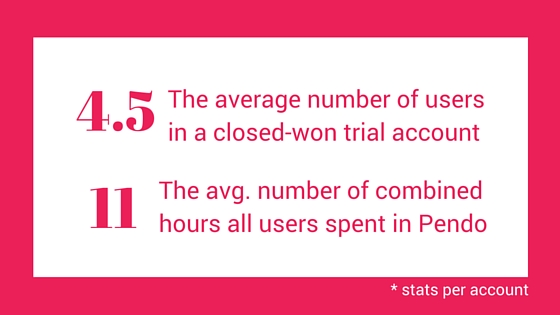
The Prospect Demo
You just finished a demo call with a hot inbound sales lead. The good news:
- They asked great questions.
- They were engaged.
- They asked for a trial/test account and you set them up. They’re ready to go!
Now, the bad news: you don’t hear from that prospect again for a month. (Hello? What’s going on?)
Sometimes you get lucky and get a prospect that is regularly sending you questions, and even responds to your follow-up/phone calls. But it’s also a reality that some people want to be left alone in their evaluation process. There’s also the situation where the unresponsive prospect is simply too busy to communicate back to the salesperson. So how do you know if they’ve gone dark and should be removed from your pipeline or if they’re actually still interested?
Good Forecasting
If your team has invested in sales enablement tools such as Outreach, Toutapp, or CirrusInsight, you have great visibility into prospect activities – you can see that a prospect has opened your email 5 times a day for the past 7 days. That sort of oversight can give you a real sense of security that they are still interested, but simply haven’t gotten back to you yet. However, that’s really only half of the story.
What if I told you there was more to qualifying a sale than simply tracking emails or content? Since I started working for Pendo, I’ve learned the other half of the prospect story. There’s so much more information you’re leaving on the table.
Deeper Insights
Working for a software company that uses its own analytics and in-app messaging tools has opened my eyes. Our product, Pendo, gives me incredibly consumable insights into what our free trial users are doing. Using the data captured by Pendo, I can easily see that “Mr. Non-Responsive Prospect” has spent 3 hours in his trial account in the past week. So I don’t worry that he hasn’t emailed or called me back. I know exactly which features he’s actively exploring in our product and that he is still very interested.
And what about those key stakeholders that come out of nowhere? Pendo prospects can add users within their company to a Pendo trial account. I can see who was added and when, and what level of activity they have within the account – without asking an engineer or product manager. That allows me to reach out to those additional stakeholders without ever having to ask my original contact who they are. I can establish a relationship with them, and not be surprised when they “appear” in the sales lifecycle.
I’m always looking for ways to more accurately forecast opportunities in my pipeline. In addition to insights about a single prospect or account, Pendo also gives me insights that help shape the bigger strategy around future accounts and prospects. We use InsightSquared to do predictive forecasting based on many different factors in Salesforce – like deal size, time in stage, or number of activities. It’s a fantastic product and gives us a ton of data we wouldn’t otherwise have. But what about adding in engagement with our trials? Pendo product data takes forecasting to the next level.
Better Forecasting
I decided to test my product and run an analysis . . .
I took all of our Q1 closed-won deals and evaluated prospects’ behavior in Pendo during their trial period. What I found was:
- The average number of users in a closed-won trial account was 4.5.
- The average amount of time spent in Pendo per account (including all users) was just under 11 hours.

This allowed me to set a sort of “benchmark” moving forward to understand if an opportunity has real traction or not. It’s obvious that someone who has spent only 5 minutes in the trial isn’t a good prospect, but knowing that a sale consistently comes from 11 prospect hours spent in the product (and not 2, or 8, or 20) is another tool in my Big Data tool belt. I can also educate new prospects about what type of time investment they should expect for a successful trial evaluation of Pendo.
We also can automatically push product data from Pendo trials into Salesforce. I can go to an opportunity and see time spent exploring the product, user count, and last login for that one account. More importantly, I can see “number of public guides” created and the “number of features” tagged — two core functionalities of our platform. Our next step is to start pushing these metrics into InsightSquared to leverage the predictive learning of their platform. Our sales director will then be able to have one more key indicator to help with pipeline management and forecasting for our team.
No Coding Required? Beautiful.
The beauty of all of this is that someone like me – who has zero access or training in our codebase – is able to get detailed product usage information on prospects easily and quickly without engineering help. I have a better understanding of what a good trial user looks like based on an analysis I was able to implement without anyone’s help. This is the information sales teams with trial products need – and they need it to be consumable, and easily accessible. Trust me, once you have this data, you won’t be able to imagine ever living (or selling) without it.
Emily Williams, infamous Pendo Account Executive, is a master of going rogue. Never one to stay inside the lines, she’s the kind of person who could probably make a lethal weapon out of paper clips, scotch tape and string if she had to. We love her smile and her scrappiness and try very, very hard to keep her happy. Subscribe to the Pendo blog for more sales insights from Emily and best practices from our Pendo team.

